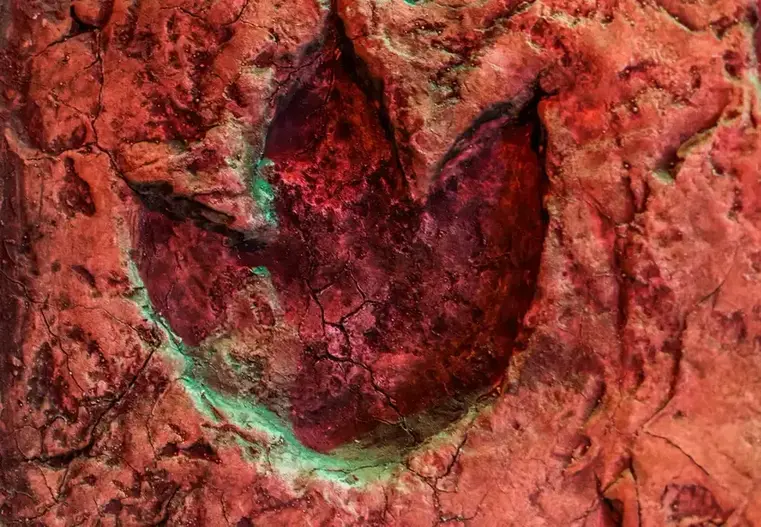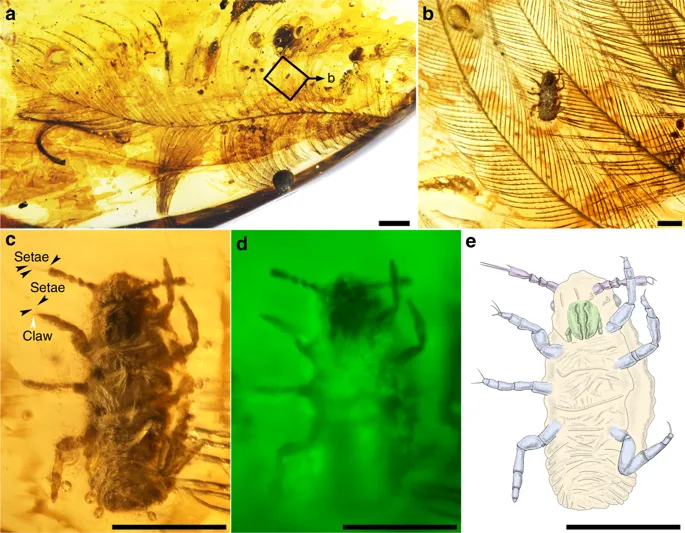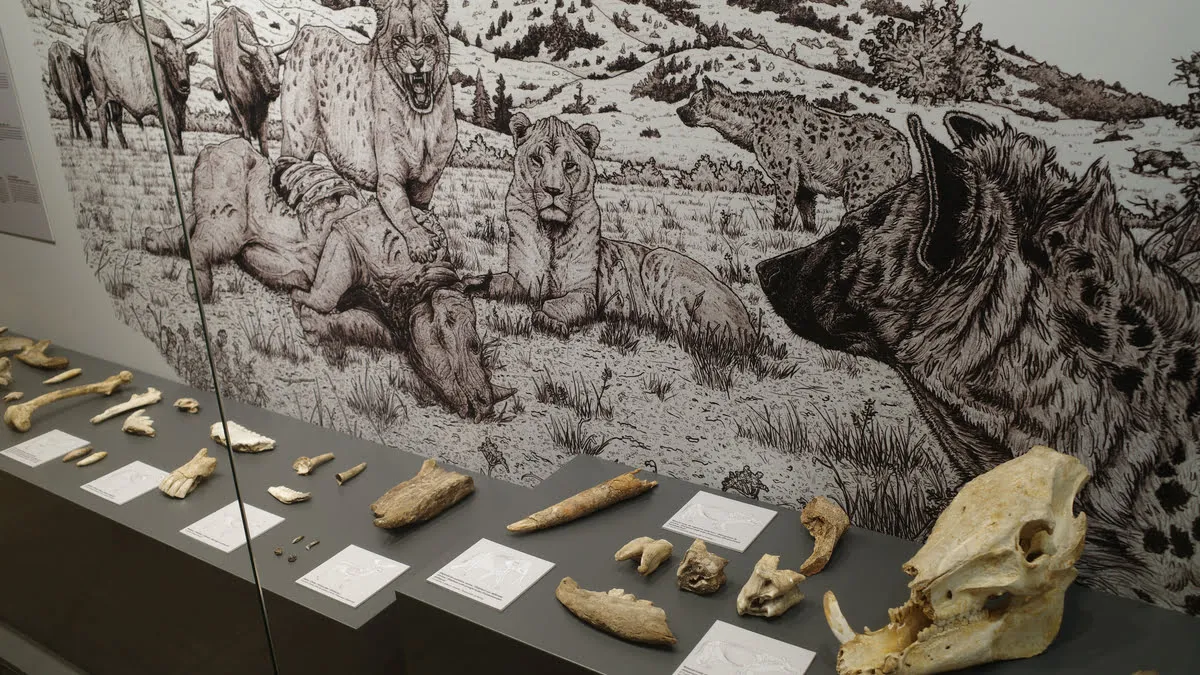The fossilization process is a remarkable phenomenon. It allows us to study the forms of life that inhabited our planet millions, and even billions, of years ago.
From the smallest microorganisms to the mightiest dinosaurs, fossils offer an unparalleled glimpse into the past, preserving the intricate details of ancient creatures and ecosystems.
The oldest fossils are around 4 billion years old. So how long does it take for fossils to form?
Fossils are defined as any preserved remains, traces, or impressions of ancient life over 10,000 years old. Fossilization timescales vary. While rapid burial can fossilize organisms in mere thousands of years, the full process of permineralization and compression typically requires millions of years.
While this is pretty straightforward, I’m sure you have lingering questions. What happens to these remains in the meantime? Let’s get right to it to see how all of this happens.
What Is Fossilization?
Fossilization is the process that turns the remains of something that has died into a petrified form that can be preserved. This can happen in a lot of different ways and depends on what is being fossilized and where fossilization happens.
We know that fossilization is rare. Why don’t more remains fossilize?
- Decomposition: If an organism isn’t quickly buried after it dies, it’s likely to break down completely, leaving nothing behind to fossilize.
- Scavenging: If remains are left out in the open, they can be picked apart or eaten by other animals, making it harder for them to become fossils.
- Erosion: Sometimes, the rocks or dirt that hold fossils can wear away over time, destroying the fossils inside.
- Earth’s movements: Things like earthquakes, volcanic eruptions, and the shifting of the Earth’s plates can mess up the layers of the earth where fossils are found.
- Acidic conditions: If the environment is too acidic, it can dissolve bones and shells, which means they can’t turn into fossils.
- No hard parts: It’s tougher for organisms that don’t have bones, shells, or teeth to become fossils because their soft parts decay quickly and don’t usually stick around long enough to be preserved.
- Bad burial conditions: For an organism to become a fossil, it needs to be buried in just the right kind of dirt or rock that can protect it. If the conditions aren’t right, like if there’s too much oxygen or too many critters in the soil, the chances of becoming a fossil are slim.
Watch this short video below for more on why fossilization is rare.
When we think of fossils we usually think of bones and teeth. What else can fossilize and how does it happen?
How Do Fossils Form?
Fossils form when organic material from a living thing is preserved. There are many ways to preserve organic material. Obviously, the living thing has to die first, so I’ll move on from that.
The fossilization process typically involves the following steps:
- Burial: The organism or its remains must be quickly buried by sediment or trapped in a preservative medium like amber or ice to prevent decomposition and exposure to the elements.
- Permineralization: Over time, the original organic matter is gradually replaced by mineral deposits from groundwater, creating a rock-like replica of the original organism.
- Compression: In some cases, the remains are compressed and flattened by the immense pressure of overlying sediments, resulting in two-dimensional impressions or imprints.
The next step after death is burial. This burial needs to happen quickly before the organic material can rot and decompose.
Permineralization is the method most people think of as fossilization. Here, the buried remains are surrounded by groundwater.
The groundwater has minerals in it from the surrounding bedrock. These minerals are left behind when the water soaks into the organic material.
Eventually, enough of these minerals have been deposited and undergo our final step: compression. This creates a hard, petrified rock that we know as a fossil. This is how most bones are preserved and also how petrified wood is made.
Fossil Casts
Another common type of fossilization is the making of casts and molds. Here, the buried remains dissolve away completely and leave behind a mold of their shape.
Sometimes this mold fills in with material and a cast is made. When this happens, the original living thing has disappeared entirely and only the shape of it is left behind.
Sometimes we find just the cast or the mold, and sometimes we get both matching sets.
Shells are usually fossilized by replacement or recrystallization. This is when the original material goes through a chemical process that replaces it entirely with something else. Think footprints or skin impressions.
The process is not always straightforward. Hang in there, because I’m about to introduce a few terms that you might not have heard before.
Recrystallization is when the mineral a fossil is made of changes from one thing to another, something that happens to shells and marine fossils a lot. This happens with aragonite and calcite and depends on the minerals present in the ocean.

Sometimes plants get pressed flat by the rocks they are buried in, leaving behind an impression of the original plant or a carbon film compression. When these plants get pressed into coal, it is called coalification.
Now you should have a better understanding of how fossils can form. Let’s explore the necessary conditions some more.
What Conditions Are Necessary to Form Fossils?
It’s very important that remains get buried immediately after death. This means that it is very difficult for anything living on land to be fossilized.
As dirt gets blown around and eroded, anything buried there is brought to the surface. These remains will not fossilize because they will continue to rot.
River valleys are places where rocks and dirt get deposited all the time and floods are common. This will keep remains buried long enough for them to fossilize.
Mud is good for fossils because water passes through it very slowly and gives the fossils time to form without decay. As stated in our article on why fossils form in sedimentary rock, the type of substrate matters for fossilization. Check that out after you’re done here.
Lakes can be another good place on land for fossils to form. Some lakes have very little oxygen at the deepest parts where the waters are calm and still.

This means that most of the bacteria that cause decomposition cannot survive there! Anything that sinks to the bottom of lakes like these has an excellent environment for fossilization to happen.
The ocean is another great place for fossils. The ocean floor is constantly being covered with more sediment.
There are many places where there is very little oxygen too. This means that fossils form very easily here. This is why we find more marine fossils than terrestrial fossils even though today there are more known terrestrial species than marine ones.
So not only has most life on Earth lived in the ocean, they have a far better chance of fossilizing. Unfortunately, we can only explore oceans that receded revealing dry land, so most fossils are out of reach.
You’re probably wondering what else can fossilize. Let’s cover a few common examples.
What Can Fossilize?
The most common types of fossils are bones, teeth, shells, eggs, poop, leaves, and seeds, and trace fossils like burrows or footprints. From giant trees and towering sauropods to microscopic bacteria and pollen, the fossil record shows us all sorts of life from the past!
This is not a complete list of what can fossilize, but it covers the most common ones. If I asked you at random to name a type of fossil, bone is probably the first thing to pop into your head.
How Long Does It Take for a Bone to Fossilize?
How long does it take to become a fossil? If your bone gets buried in the right conditions, it can be a fossil in a few thousand years!
Remember that generally speaking, a fossil is any preserved remains older than 10,000 years. Since the last non-avian dinosaurs died 66 million years ago, their bones are just as old.
The bones of dinosaurs and other animals were turned into rock during the fossilization process. The howstuffworks.com website has a great article illustrating this process further.
Remains that are younger than 10,000 years old are sometimes called subfossils. The term subfossil describes anything in a blurry grey zone of paleontology; not quite modern, but not quite ancient.
I must note that this is not an official term. We can use it because it helps describe things like partially fossilized animals from caves or plants from very old peat bogs.
Examples of subfossils include:
- Preserved remains of extinct species like mammoths or ground sloths that were found in tar pits or frozen in permafrost.
- Ancient plant matter recovered from peat bogs or waterlogged environments.
- Human artifacts or remains from archaeological sites, such as bone tools or skeletal remains.
Can Feathers Be Fossilized?
Paleontologists often find the impressions of feathers alongside the bones of animals. This is how we know that certain types of dinosaurs were feathered.
The first fossil feather ever found in stone was found in 1861. It belonged to the famous Archaeopteryx. Some fossil feathers are so well preserved we can see stripes and other color markings left behind!
In another article on dinosaurs in media, we cover how Archaeopteryx shaped public perceptions of ancient life. It quickly became a cornerstone of evolutionary theory and one of the most important fossils to date.
Such amber-encased feathers are scientific treasures, offering a level of detail that is rarely achievable through conventional fossilization processes. They provide paleontologists with valuable information about the diversity, ecology, and evolutionary adaptations of dinosaurs.
Finding feathers fossilized in stone is still pretty rare. Feathers are composed of lightweight, delicate materials like keratin and pigments, which makes them susceptible to degradation and decomposition over geological time.
Even more rarely we find feathers trapped in amber. Amber, the fossilized tree sap made famous in Jurassic Park, provides great fossils. Check this image out that shows a feather with a crawling insect.

These feathers in amber are beautifully preserved and show us the texture and colors they may have had millions of years ago. So how does tree sap make this remarkable stuff?
How Long Does It Take Amber to Form?
Amber is a fossil all on its own, but it is also known for containing things like bugs, plants, and feathers that are not usually fossilized. While amber can provide a treasure trove of information, it cannot resurrect dinosaurs as we’ve covered here.
Amber can even preserve bacteria! We don’t see amber in the fossil record until the Carboniferous period, about 320 million years ago.
Amber takes around 40,000 years to form, so the youngest amber fossils that we have are from the Pleistocene epoch. The general timeline for amber formation can be broken down into the following stages:
- Resin Production [Years to Decades]: The journey begins with resin secreted from ancient trees, primarily conifers and some flowering plants, as a natural defense against injury or infection. This sticky, plant-derived organic compound would ooze and harden, potentially trapping insects, feathers, plants, or other organisms within.
- Burial and Polymerization [Thousands of Years]: After the resin-entombed inclusions fell to the ground, they would become buried under successive layers of sediment, protecting them from decomposition. Over thousands of years, the resin would undergo polymerization, a process of molecular cross-linking catalyzed by heat and pressure from the overlying sediments.
- Fossilization [Millions of Years]: As the polymerized resin continued to experience higher temperatures and pressures from the Earth’s crust, it would gradually transform into the stable, glass-like material we recognize as amber. This final stage of fossilization can take anywhere from a few million years to over 100 million years, depending on the specific geological conditions.
What Else Can Fossilize?
Technically, everything can fossilize! But it has to be preserved in the right conditions, and this is extremely rare. One of the most important fossil sites, the Burgess Shale, is famous for preserving soft-bodied organisms like Opabinia and Wiwaxia.
Another soft group of organisms, fungi, don’t preserve very often either. When they do it is usually microscopic spores. Even mushroom-like fungi have been found as fossils.
I’ve compiled a table that provides some further examples. Let me know if you’ve collected any of these.
| Fossil Type | Description | Examples |
|---|---|---|
| Body Fossils | Preserved remains or impressions of an organism’s body | Bones, teeth, shells, petrified wood, leaves, insects in amber, fossilized skin, feathers, embryos |
| Trace Fossils | Evidence of biological activity | Footprints, burrows, nests, coprolites (fossilized feces), bite marks, fossilized nests with eggs, preserved trackways |
| Soft-bodied Fossils | Preserved remains of organisms without hard parts | Jellyfish, worms, Burgess Shale fossils (e.g., Opabinia, Wiwaxia), fossilized brains, internal organs |
| Microfossils | Microscopic fossils | Pollen, spores, diatoms, foraminifera, bacteria, fossilized algae, microscopic animal remains |
| Chemical Fossils | Molecular or isotopic traces of biological activity | Biomarkers (e.g., lipids, pigments), isotopic signatures, preserved biomolecules (e.g., ancient DNA, proteins) |
| Plant Fossils | Preserved remains of plants | Petrified wood, leaves, seeds, pollen, spores, fossilized flowers, fruit, roots |
| Vertebrate Fossils | Remains of animals with backbones | Bones, teeth, eggs, footprints, coprolites, fossilized skin impressions, stomach contents |
| Invertebrate Fossils | Remains of animals without backbones | Shells, trilobites, insects in amber, trace fossils, fossilized soft tissues, internal structures |
| Fungal Fossils | Preserved remains of fungi | Microscopic spores, fossilized mushrooms (e.g., Palaeoagaricites), fossilized mycelium, fungal fruiting bodies |
How Long Does it Take Fossils to Form – 10,000 Years+
Fossils are our primary tool to understand the journey of life on Earth. Though we only have a small fraction of all the things that have ever existed, we’re fortunate enough that some have seen the light of day.
If you’ve heard that fossils are at least 10,000 years old, this is correct. Now you should know that this doesn’t tell the full story; subfossils can be younger than this and many fossils take millions of years to form.
I hope this topic has been as fun to read as it was to write. Let us know if you have any further questions or topics that we can cover next. If you found this site helpful, please share it!

